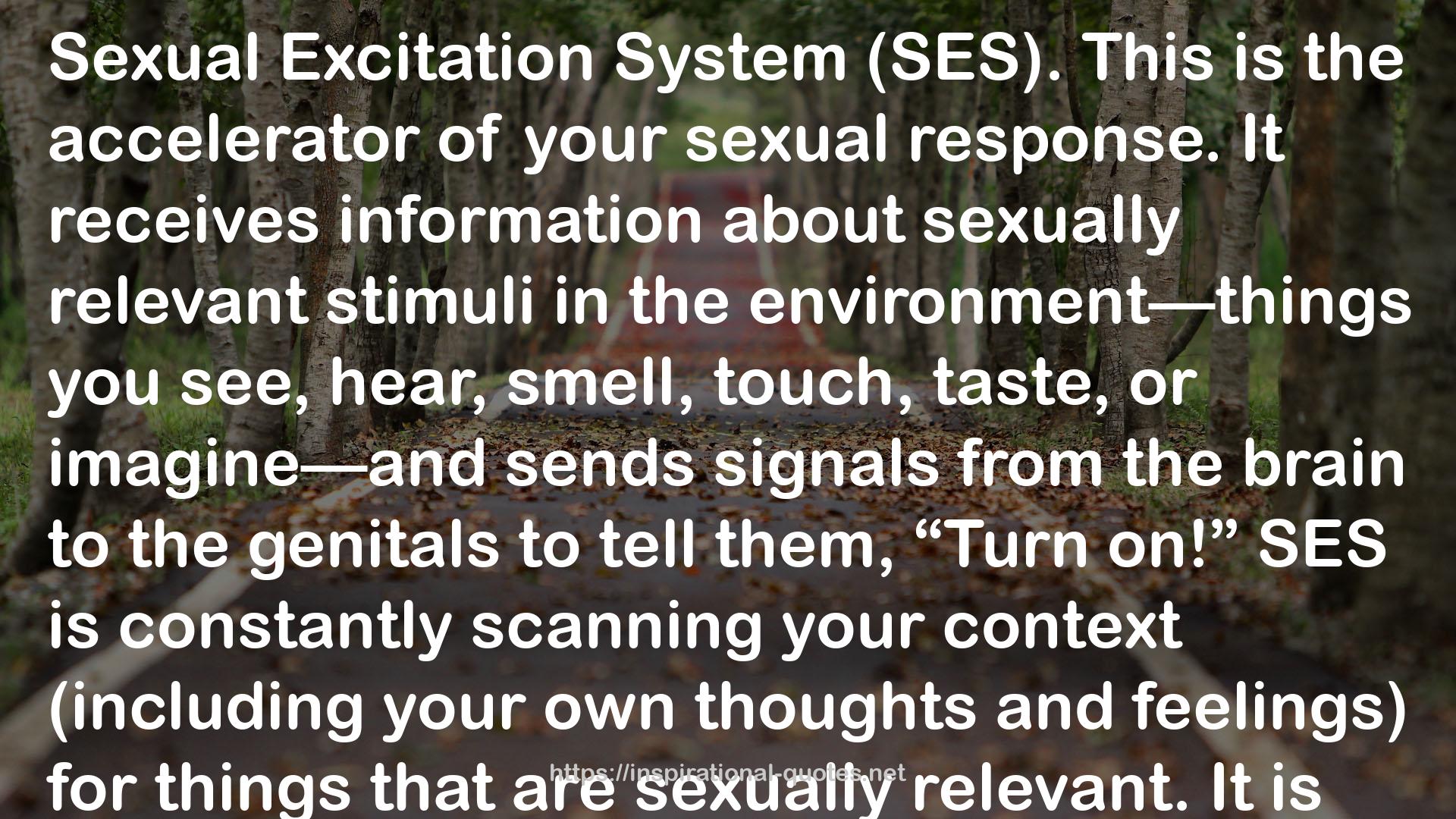" Sexual Excitation System (SES). This is the accelerator of your sexual response. It receives information about sexually relevant stimuli in the environment—things you see, hear, smell, touch, taste, or imagine—and sends signals from the brain to the genitals to tell them, “Turn on!” SES is constantly scanning your context (including your own thoughts and feelings) for things that are sexually relevant. It is always at work, far below the level of consciousness. You aren’t aware that it’s there until you find yourself turned on and pursuing sexual pleasure. Sexual Inhibition System (SIS). This is your sexual brake. “Inhibition” here doesn’t mean “shyness” but rather neurological “off” signals. Research has found that there are actually two brakes, reflecting the different functions of an inhibitory system. One brake works in much the same way as the accelerator. It notices all the potential threats in the environment—everything you see, hear, smell, touch, taste, or imagine—and sends signals saying, “Turn off!” It’s like the foot brake in a car, responding to stimuli in the moment. Just as the accelerator scans the environment for turn-ons, the brake scans for anything your brain interprets as a good reason not to be aroused right now—risk of STI transmission, unwanted pregnancy, social consequences, etc. And all day long it sends a steady stream of “Turn off!” messages. This brake is responsible for preventing us from getting inappropriately aroused in the middle of a business meeting or at dinner with our family. It’s also the system that throws the Off switch if, say, in the middle of some nookie, your grandmother walks in the room. The second brake is a little different. It’s more like the hand brake in a car, a chronic, low-level “No thank you” signal. If you try to drive with the hand brake on, you might be able to get where you want to go, but it’ll take longer and use a lot more gas. Where the foot brake is associated with “fear of performance consequences,” the hand brake is associated with “fear of performance failure,” like worry about not having an orgasm. "
― Emily Nagoski , Come as You Are: The Surprising New Science that Will Transform Your Sex Life
